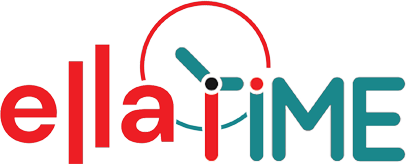The world of education is undergoing a profound transformation. From remote classrooms to skill-based microlearning, technology has reshaped how we acquire knowledge and share ideas. Among the many innovations shaping this new landscape, WeLearn 2.0 stands out as a symbol of what’s possible when customization and connection are placed at the heart of digital learning.
This article explores the meaning behind WeLearn 2.0, its features, its impact on learners and educators, and what it tells us about the future of education in a digital-first world.
What Is WeLearn 2.0?
At its core, WeLearn 2.0 represents the next evolution of digital learning platforms. Unlike traditional e-learning models, which focused primarily on delivering standardized content, WeLearn 2.0 emphasizes personalization, interactivity, and community-driven growth.
It is not just a platform but a learning philosophy that leverages:
-
AI-driven customization to tailor content to individual learners.
-
Collaborative tools to foster group learning and peer support.
-
Data analytics to measure progress and optimize learning outcomes.
The Shift from E-Learning to WeLearning
To understand the significance of WeLearn 2.0, it helps to compare it with traditional digital learning approaches.
Traditional E-Learning (1.0 Era)
-
One-size-fits-all courses.
-
Limited interaction between learners.
-
Focus on static content (videos, slides, text).
-
Assessments based on memorization.
WeLearn 2.0 (Next-Generation Learning)
-
Adaptive learning paths based on individual needs.
-
Peer-to-peer collaboration and knowledge exchange.
-
Interactive experiences like gamification and simulations.
-
Competency-based assessment aligned with real-world skills.
This marks a fundamental shift: from content delivery to connected, personalized learning ecosystems.
Key Features of WeLearn 2.0
1. Customization Through AI
WeLearn 2.0 uses artificial intelligence to assess learning styles, pace, and preferences—delivering tailored recommendations and content sequencing.
2. Collaborative Learning Spaces
Discussion boards, project-based groups, and virtual workshops allow learners to build knowledge together, not in isolation.
3. Microlearning and Modular Design
Bite-sized lessons and flexible modules enable learners to focus on exactly what they need, when they need it.
4. Gamification and Engagement Tools
Badges, challenges, and progress trackers transform learning into an engaging, interactive experience.
5. Data-Driven Insights
Analytics dashboards provide learners and educators with clear insights into strengths, weaknesses, and overall progress.
6. Cross-Platform Accessibility
WeLearn 2.0 ensures content is available across devices—desktop, tablet, and mobile—supporting learning anytime, anywhere.
Benefits of WeLearn 2.0
-
Personalized Journeys: Learners stay motivated by following unique paths tailored to their needs.
-
Greater Engagement: Interactive tools and social features make learning more enjoyable.
-
Skill Alignment: Competency-based models ensure education translates into real-world skills.
-
Inclusive Access: Cloud-based solutions reduce geographic and economic barriers to learning.
-
Community Growth: Learners gain knowledge not just from experts but also from peers worldwide.
WeLearn 2.0 and the Future Workforce
Education is no longer confined to schools and universities. Reskilling and upskilling have become essential in a rapidly changing job market. WeLearn 2.0 directly addresses this shift by:
-
Offering lifelong learning ecosystems for professionals.
-
Providing industry-specific micro-credentials.
-
Creating bridges between education and employment through competency mapping.
For employers, WeLearn 2.0 becomes a powerful tool to build agile, future-ready teams. For learners, it ensures continuous adaptability in an uncertain economy.
Cultural and Social Implications
Beyond academics and work, WeLearn 2.0 signals a cultural change:
-
Democratization of Knowledge: Access is no longer limited to elite institutions.
-
Global Collaboration: Learners can connect across borders, sharing perspectives and skills.
-
Identity in Learning: Personalization means education becomes part of one’s self-expression.
It embodies a shift toward education as a social and cultural experience, not just an individual pursuit.
Challenges Ahead
While promising, WeLearn 2.0 faces hurdles:
-
Digital Divide: Access to reliable internet and devices remains unequal.
-
Data Privacy: AI-driven personalization raises concerns about how learning data is stored and used.
-
Over-Reliance on Technology: Human mentorship and emotional connection risk being overshadowed by automation.
Addressing these challenges will determine how inclusive and effective WeLearn 2.0 truly becomes.
Final Thoughts
WeLearn 2.0 is not just the next step in e-learning—it’s a reimagining of education itself. By blending personalization, collaboration, and cultural connectivity, it creates an ecosystem where learning is flexible, engaging, and deeply human-centered.







